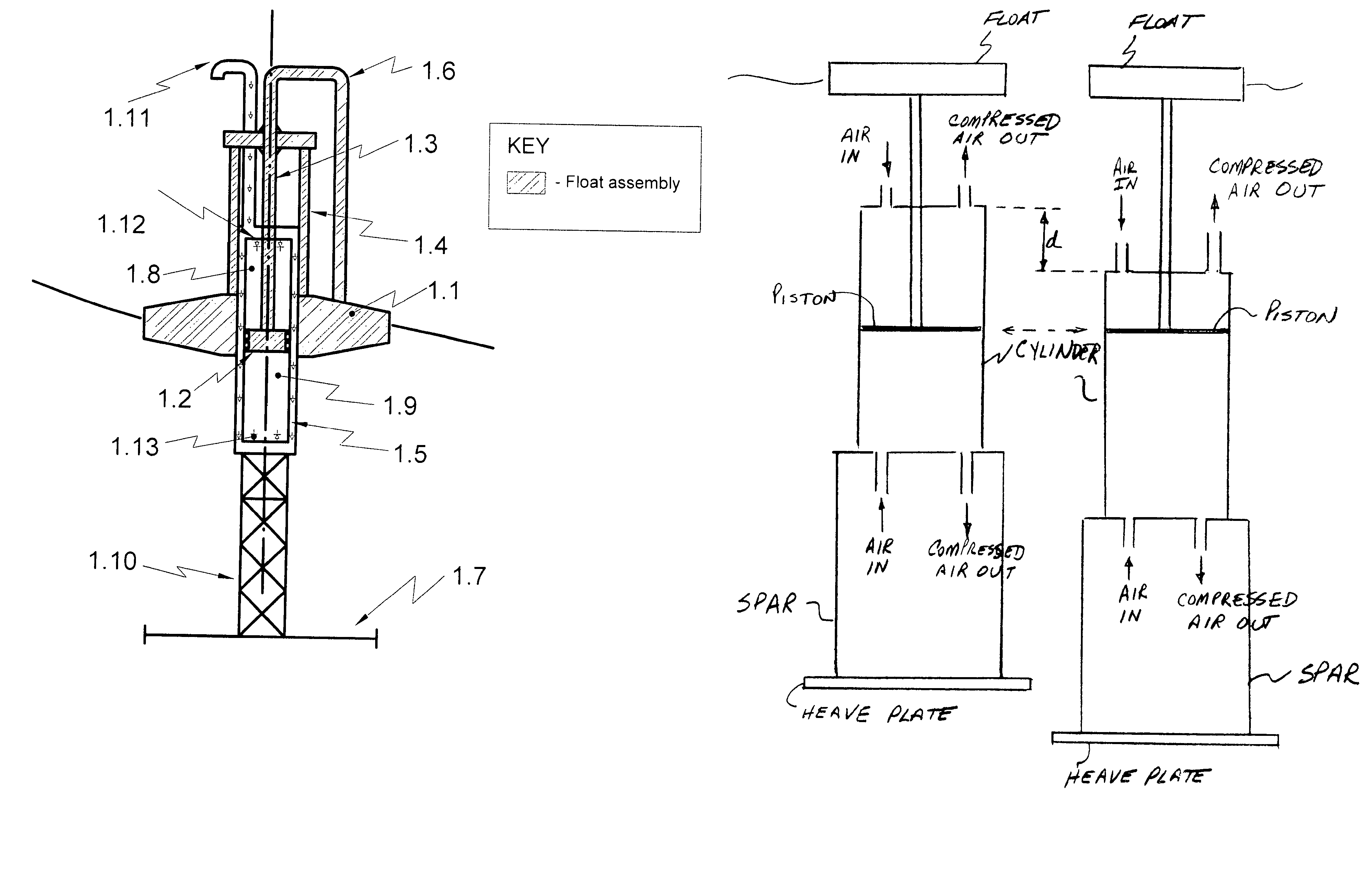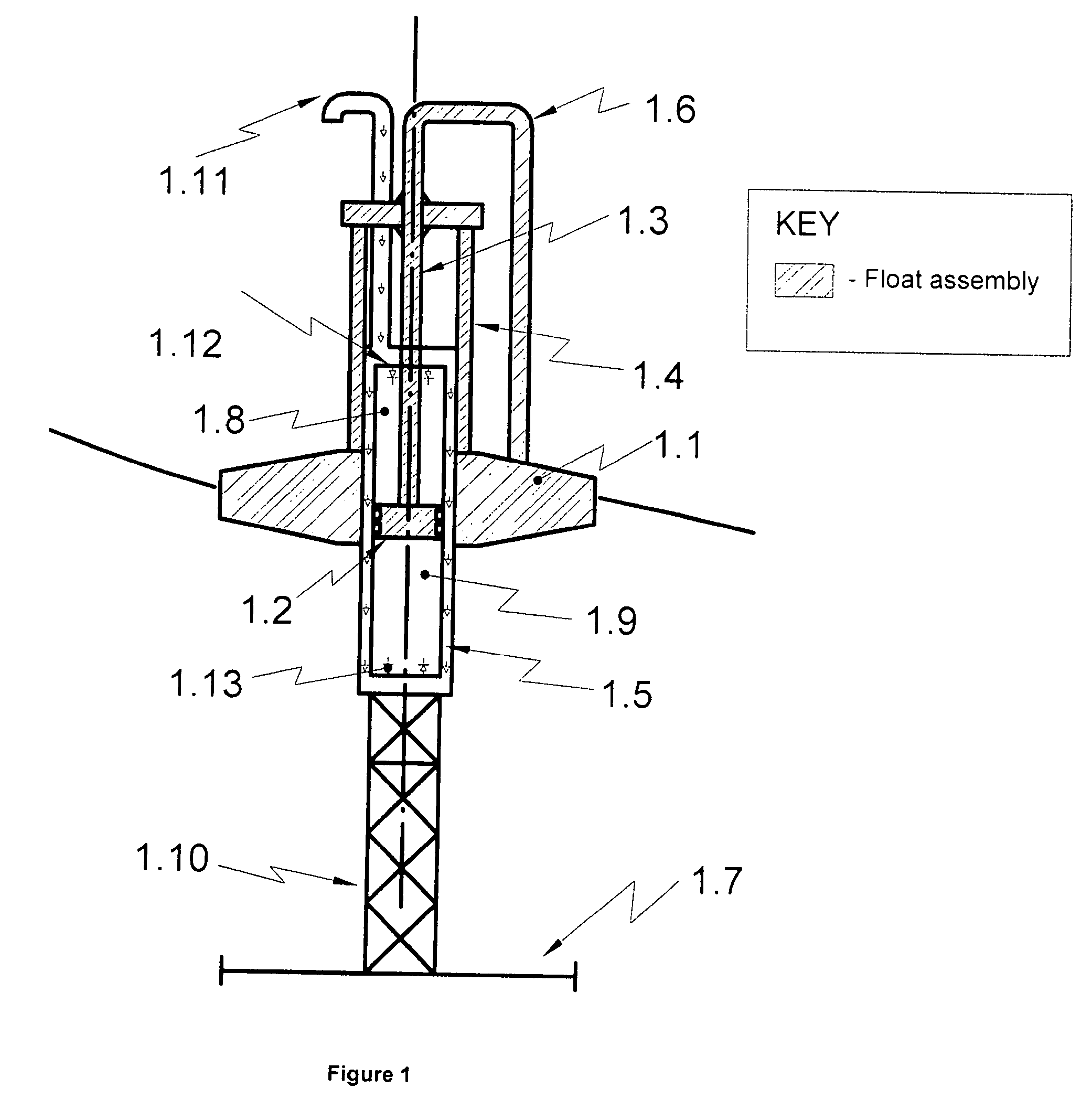Wave energy converter with air compression (WECWAC)
a technology of air compression and wave energy, applied in the direction of positive displacement liquid engines, electric generator control, machines/engines, etc., can solve the problems of long life, low cost, and significant challenges in efficiently harnessing ocean wave energy, and achieve the effects of simple design, and reducing the size/volume of the upper chamber
- Summary
- Abstract
- Description
- Claims
- Application Information
AI Technical Summary
Benefits of technology
Problems solved by technology
Method used
Image
Examples
Embodiment Construction
[0016]Referring to FIG. 1, there is shown a highly simplified diagram of a WECWAC embodying the invention. The WECWAC includes a float 1.1 and a central spar 1.10. Mounted above the central spar 1.10 is a cylinder body 1.5 and attached to the bottom of the central spar 1.10 is a heave plate 1.7. The float 1.1 defines a first floating body which is designed to move in phase with the waves. The float can be any shape. In a preferred embodiment, the float is toroidal with a central opening shaped to allow it to move up and down relative to the centrally located spar. The spar 1.10 with the cylinder 1.5 and the heave plate 1.7 defines a second floating body which is generally designed to move out of phase with the waves. The first and second floating bodies thus tend to move out of phase relative to each other. Each floating body is able to move independently of the other, with only air pressure and friction linking the two.
[0017]The float 1.1 is connected via a bridge 1.4 to a piston r...
PUM
 Login to View More
Login to View More Abstract
Description
Claims
Application Information
 Login to View More
Login to View More - R&D
- Intellectual Property
- Life Sciences
- Materials
- Tech Scout
- Unparalleled Data Quality
- Higher Quality Content
- 60% Fewer Hallucinations
Browse by: Latest US Patents, China's latest patents, Technical Efficacy Thesaurus, Application Domain, Technology Topic, Popular Technical Reports.
© 2025 PatSnap. All rights reserved.Legal|Privacy policy|Modern Slavery Act Transparency Statement|Sitemap|About US| Contact US: help@patsnap.com



